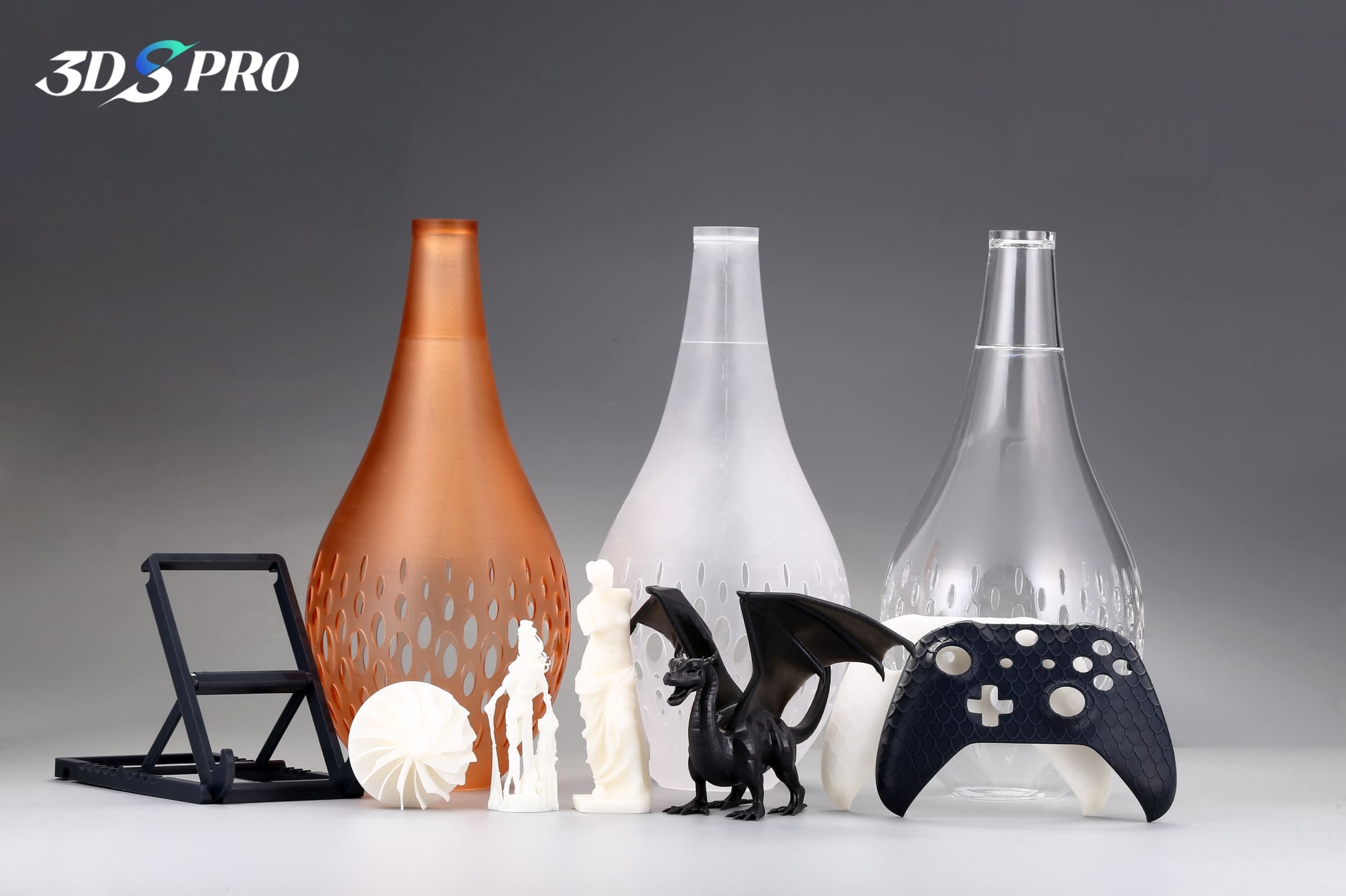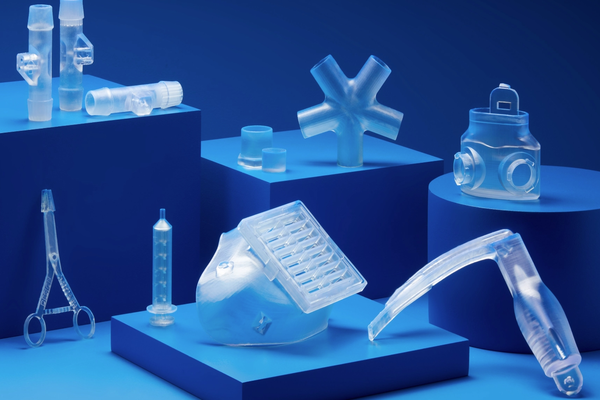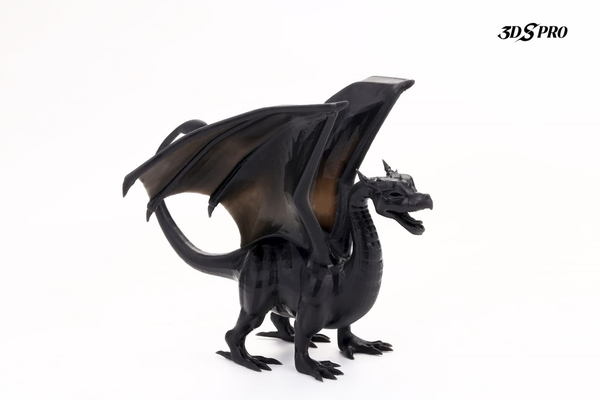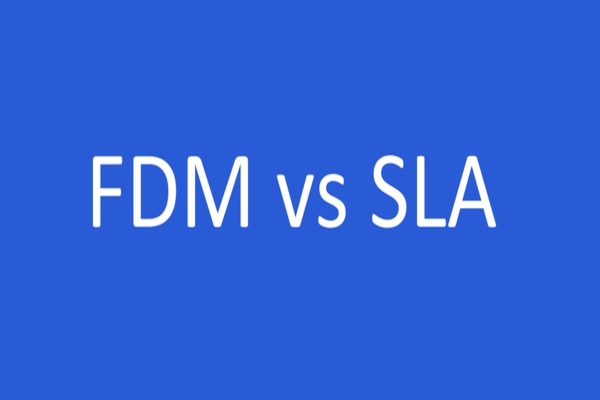What is Stereolithography (SLA 3D Printing)?
Stereolithography, commonly known as SLA 3D Printing, is a pioneering form of additive manufacturing technology. Invented in the 1980s by Chuck Hull, SLA is notably the first commercialized 3D printing method. It operates on the principle of vat photopolymerization, a process where a liquid photopolymer resin is selectively cured by an ultraviolet (UV) laser.
The SLA 3D printer directs the UV laser across a vat of photosensitive resin, solidifying the material layer by layer to construct a three-dimensional object. SLA 3D printing produces parts with smooth surface finish, high precision, and intricate details.
How does SLA 3D printing work?
SLA 3D Printing Process
Stereolithography (SLA) 3D printing is a process that builds objects layer by layer using a UV laser to cure liquid resin into hardened plastic. The process starts with a 3D model, which is sliced into thin, horizontal layers. These slices are then used to direct the UV laser across the photosensitive resin tank, solidifying the material to create the final object.
1. Layering: The build platform dips into the resin vat, and the laser traces the first layer, solidifying the resin.
2. Elevating: After each layer is cured, the build platform lifts to allow a new layer of resin to cover the surface.
3. Repeating: The process repeats, building the object from the bottom up.
Supports in SLA 3D Printing
Support structures are essential in SLA printing to uphold parts of the model that would otherwise be free-floating. These supports must be carefully designed to balance strength and ease of removal, ensuring they can be taken off without damaging the final print.
Post-processing for Resin 3D Prints
After printing, resin parts require post-processing, which typically includes support removal, washing in a solvent to remove any uncured resin, and then curing in a UV chamber to achieve the final material properties.
Additional steps might include sanding, painting, or coating to improve the appearance and durability of the print.
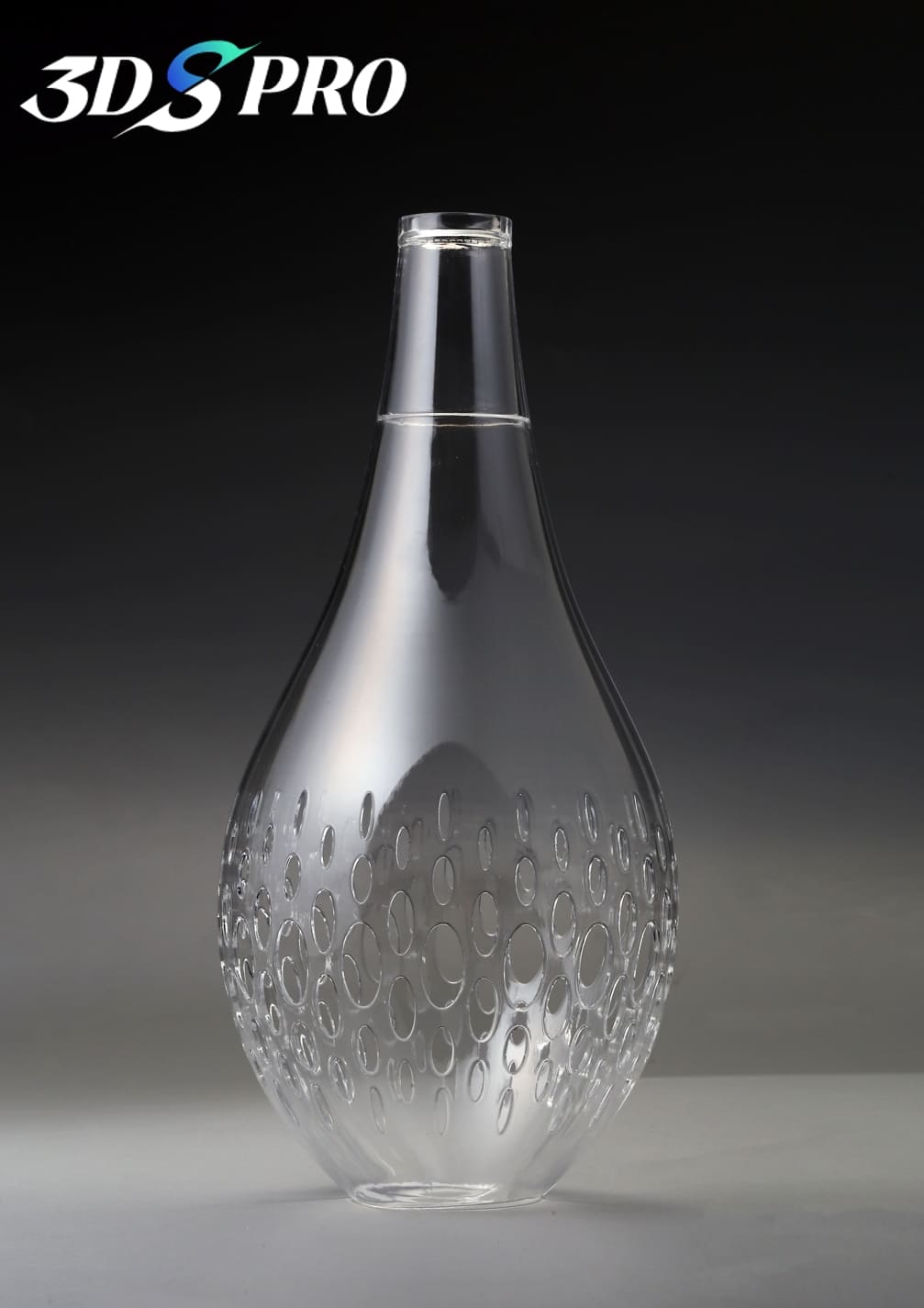
3D Printing Resin Types
There are various 3D printing resin types, each tailored for specific applications and printing characteristics.
Standard Resin
This is the most commonly used resin for general purposes. It offers a good balance between strength and cost, making it suitable for a wide range of printing needs.
Tough Resin
Designed to simulate the strength and stiffness of ABS plastic, tough resin is ideal for parts that will undergo high stress or strain.
Flexible Resin
With properties similar to rubber, flexible resin can bend and stretch, which is perfect for objects that require elasticity.
Water-Washable Resin
This type of resin can be cleaned with water instead of alcohol, simplifying the post-processing steps.
Dental Resin
Specifically formulated for dental use, this resin ensures biocompatibility and high precision for dental appliances.
Ceramic-Filled Resin
Infused with ceramic particles, this resin offers high temperature resistance and rigidity, suitable for demanding engineering applications.
3D Printing Resin vs Filament
The key differences between resin and filament lie in the printing process and the end result. Resin printing, typically using SLA or DLP technology, offers higher detail and smoother finishes due to the precision of light processing. However, it generally involves more complex post-processing and is slower than filament printing.
Filament printing, on the other hand, is faster, generally more affordable, and easier to use, making it a good choice for beginners and large-scale projects.
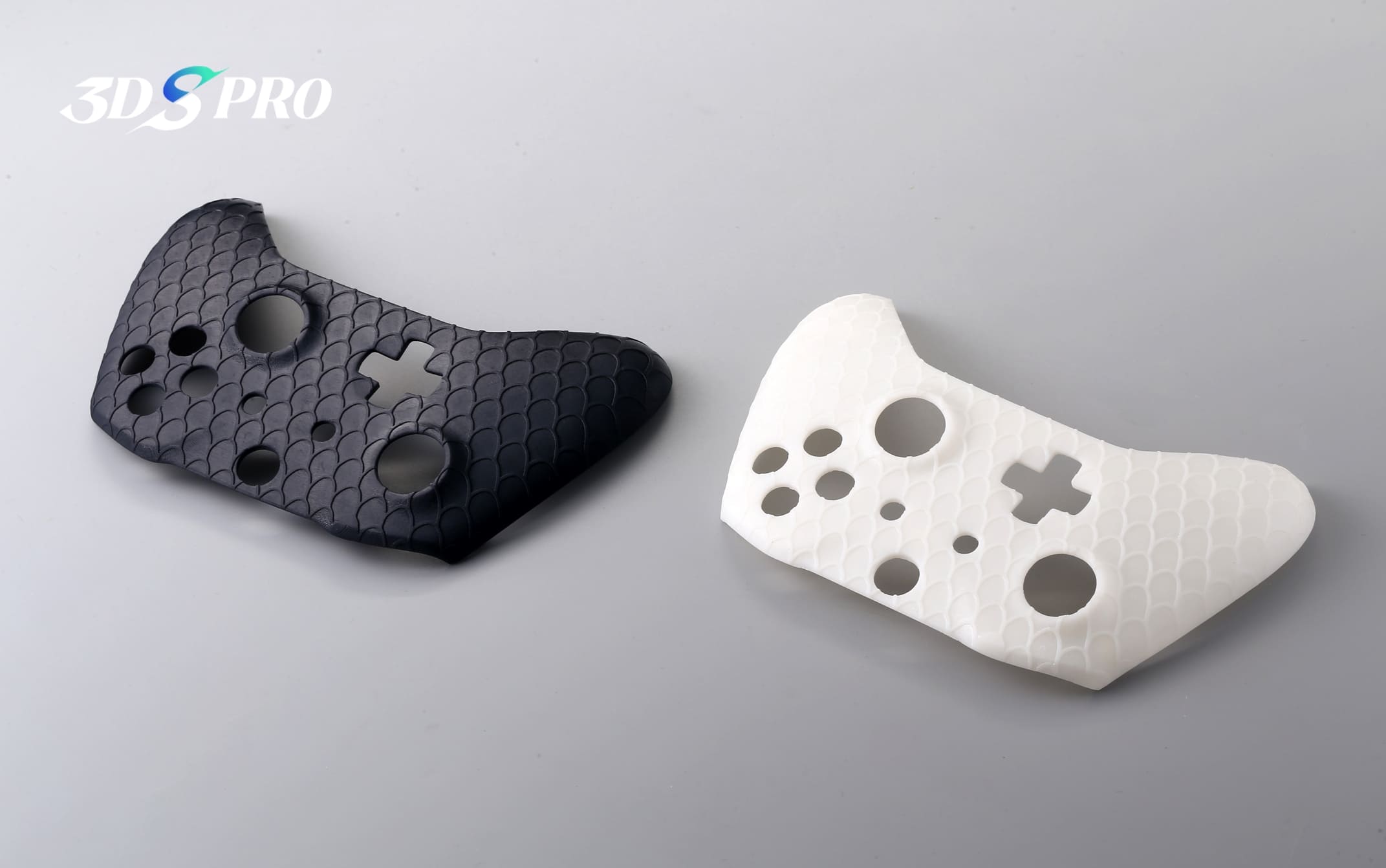
Benefits and Limitations of SLA
SLA 3D printing is known for its precision and detail, surpassing other 3D printing technologies in creating intricate designs with smooth surface finishes. The technology allows for the production of parts with complex geometries that are difficult to achieve with traditional manufacturing methods. SLA printers can produce parts with tight dimensional tolerances, making them ideal for applications requiring high accuracy.
The variety of resins available for SLA printing means that parts can be tailored for specific properties, such as flexibility, transparency, or high-temperature resistance. Additionally, SLA is capable of producing detailed miniatures and prototypes rapidly, which is beneficial for industries like jewelry design and dental orthodontics.
Despite its advantages, SLA 3D printing also has its drawbacks.
The cost of SLA printers and the resins they use can be prohibitively expensive for some users. The post-processing required for SLA prints is more labor-intensive compared to other 3D printing methods, involving washing and curing steps.
Environmental concerns are also associated with SLA printing; the resins used are not eco-friendly and can produce unpleasant odor during the printing process. The parts produced are typically brittle and not suited for load-bearing applications, limiting their use to prototyping rather than functional end-use parts.
Applications of SLA 3D Printing
In dentistry, SLA is used to produce precise dental models and fixtures.
The art and jewelry industry benefits from SLA's ability to craft detailed and delicate designs, while in product design and engineering, it enables the creation of accurate prototypes for testing and validation.
SLA's versatility extends to manufacturing, where it's used for producing master patterns for vacuum casting and sacrificial patterns for metal casting tools, molds, and dies. Its precision makes it ideal for creating components for complex assemblies and under-the-hood parts, as well as for mass customization, where each piece can be tailored to specific requirements.
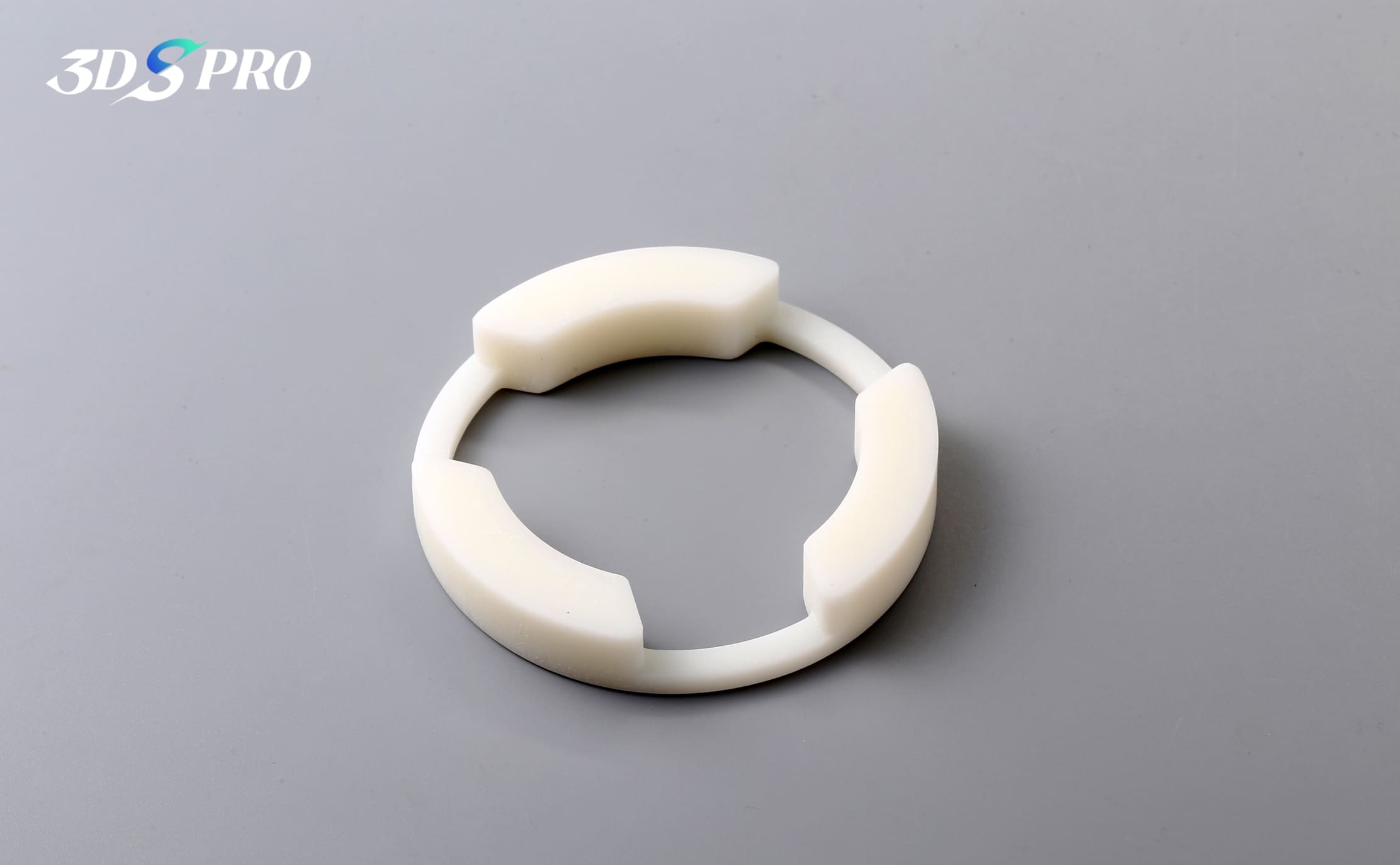
SLA 3D Printing Service
3DSPRO stands out in the SLA 3D printing service market with our commitment to accelerating innovation. We offer a seamless process from uploading your 3D model to receiving parts within days, ensuring a swift transition from concept to creation.
For SLA 3D-printed parts, we have a maximum printing size of 2100mm x 1700mm x 810mm and a tolerance of ± 200μm or 0.2%mm, catering to both large and intricate designs. With over 150 machines operating, your parts maintain high quality even at scale.
Besides, we have dedicated post-processing and 3D Plus™ Services such as UV-curing and coating to protect and preserve the integrity of the parts.
From understanding the basics to exploring SLA 3D printing, we hope this guide has illuminated the possibilities of SLA technology and how it can serve your creative and professional needs.
